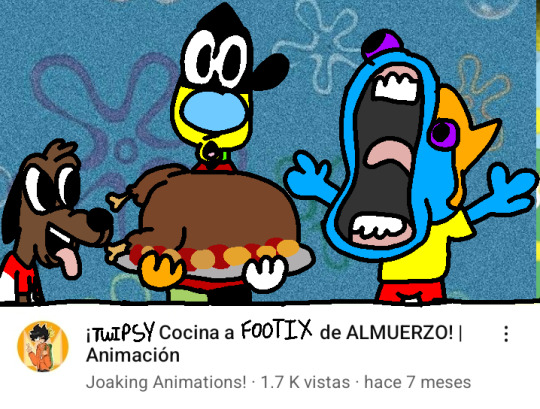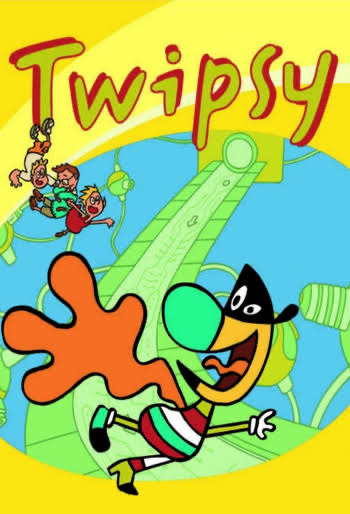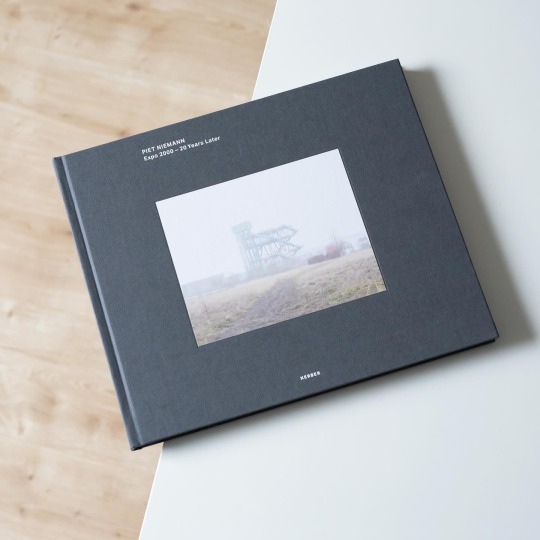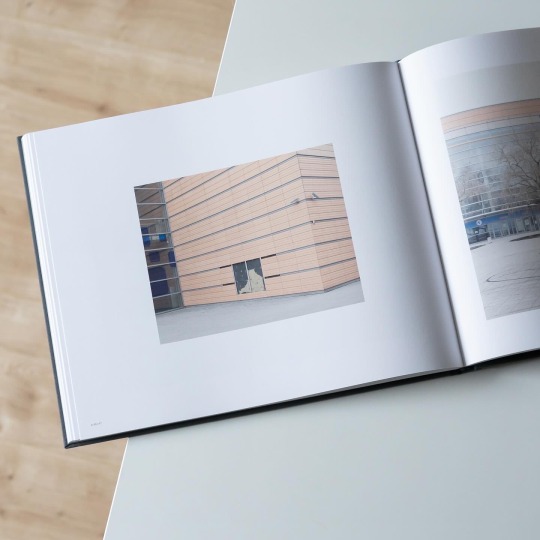#Expo hannover
Explore tagged Tumblr posts
Text
nooo twipsy you k1ll3d footix


#mascot#mascots#mascotverse#copa america#copa america mascot#colombia#world cup mascots#world cup mascot#world cup#expo2000#expo#expo hannover#Expo 2000#expo mascots#expo mascot#copa america 2001#twipsy#world cup 1994#world cup 1998#Ameriko#Striker#usa#france#germany
14 notes
·
View notes
Text

I may not be more present on mascot fandom but I’m still very curious about the lost brazilian dub of that cartoon(i just found informations about the rj dub), if someone haves the tapes of that cartoon or already watched it pls contact with some of the voice actors or javier mariscal
7 notes
·
View notes
Video
youtube
Hannover Messe 2025
0 notes
Text
If you are interested in presenting your brand at the HANNOVER MESSE show dedicated to the industry technology. You can have the best experience and guarantee high ROI by simply visiting us at expostandservice.com
#HM25#hannover#hannoverexhibition#expo#exhibition#tradeshow#tradeshowbooth#boothrental#displaybooth#displayrental#tradeshowdisplay#expostandservices
0 notes
Text


Under the motto „Man, nature, technology - A new world is emerging“ the Expo 2000 in Hannover, Germany, sought to kickstart the new millennium with a promising and sustainable outlook into the future: 155 countries exhibited on a total of 160 hectares, often in specifically designed pavilions. Between June 1 and October 31 some 18 million visitors came to see the Expo but once it was over the vast Expo area fell into a sleeping beauty slumber: although much of the infrastructure survived and many of the exhibition pavilions were demolished, demounted, re-used or translocated, landmark buildings like the Dutch pavilion by MVRDV rotted away as if to prove the Expo’s general secretary wrong: prior to the exhibition she stated that „There will be no ruins“, a noble yet unfulfilled wish.
This statement also concludes Piet Niemann’s book „Expo 2000 - 20 Years Later“, a photographic exploration of the former Expo area in Hannover published last year by Kerber Verlag. In 2020 Niemann, an architectural photographer who dedicates his free works to the long-term observation of places and the changes they undergo, set out to take stock of the current state of the area and its buildings: with great precision he documents how nature reclaimed certain areas, businesses repurposed the former exhibition architecture and also shows the previously mentioned Dutch pavilion as a derelict steel skeleton, swathed in fog and awaiting an uncertain future. But as architect Jacob van Rijs of MVRDV reveals in his essay the pavilion’s future isn’t uncertain anymore, instead it is slated for transformation into a permanent building, a circumstance that makes the photos all the more timely as they document the beauty of a ruin before its changed forever.
In general Niemann’s photos convey a sense of other-worldliness that leaves the readers wondering if the area has been frozen in time as a past idea of the future. A fantastic new look at an almost forgotten part of German history!
#piet niemann#kerber verlag#architectural photography#expo 2000#architecture#germany#architectural history#photo book#book
21 notes
·
View notes
Photo

Expo 2000 Hannover ICE-3 (DB) (Germany) on NHK Documentary about European Trains (2001)
61 notes
·
View notes
Text
For anyone going to the concert in Hanover this Sunday:
The location has been changed!
Instead of EXPO Plaza it will now take place on P28, a parking lot close to the original location. They also strongly advise to take public transport as some roads around the area are going to be closed. If you follow the link below and go to Wichtiger Hinweis -> Besucherinfo you will find a more detailed document but it's only available in German
3 notes
·
View notes
Text
Top Dust Extraction System Manufacturers In India

Industrial exhaust hoods play a significant role in maintaining air quality and safety in factories, commercial kitchens, and industrial premises. Choosing the appropriate manufacturer guarantees quality, efficiency, and compliance with industry standards. Below is a step-by-step process of how to identify good manufacturers of industrial exhaust hoods.
1. Online Research
The internet is the most readily available and broadest source of information to search for manufacturers. The following are some ways to limit your search:
Google Search: Enter keywords like "industrial exhaust hood manufacturers," "commercial kitchen exhaust hood suppliers," or "custom industrial ventilation systems."
Business Directories: ThomasNet, Kompass, and Alibaba provide the list of manufacturers along with their product catalogues and customers' reviews.
Company Sites: Check out the website of the companies so that you gain an idea of the variety of products they make, certifications attained, and ratings given by their customers.
2. Industry Specialized Trade Fair and Exhibitions
Trade fair specifically related to HVAC and industrial ventilation systems has the potential of providing you a direct interface with the manufacturers. Some of the key trade shows are:
AHR Expo (USA)
Hannover Messe (Germany)
China Refrigeration Expo
These trade exhibitions will help you compare several manufacturers, watch live product demos, and even get to see potential business associates.
3. Trade Associations and Licenses
Professional manufacturers usually belong to some associations or licensed. Look for:
ASHRAE (American Society of Heating, Refrigerating, and Air-Conditioning Engineers)
NSF International Certification (exhaust hood manufacturer for food industry)
ISO 9001 Certification (Quality Management Systems)
Certification of these associations helps in meeting the requirements of the industries.
4. Supplier and Manufacturer Directories
There are different websites that are only for buyer-manufacturer matching deals. Industrial Exhaust Hoods Manufacturers that provide product description, manufacturer detail, and customer ratings.
5. Referrals and Networking
Ask for referrals from a food service professional, individual manufacturer, or HVAC person. Industry networks are of invaluable use in prospective good manufacturer connections. LinkedIn contains industry groups such as industrial ventilation or facility management and several more.
6. Considering Multiple Manufacturers
Use your multiple shortlist and consider factors based on
Years of doing business and also in what market for some period of time.
Customization Options: Make sure they can make exhaust hoods to your specifications.
Compliance with Regulations: Make sure their product complies with OSHA, NFPA, and local ventilation codes.
Customer Reviews and Testimonials: Check reviews on sites like Trustpilot, Google Reviews, or company sites.
7. Requesting Quotes and Samples
Contact shortlisted manufacturers for a quote. Comparison:
Pricing and Payment Terms
Lead Time and Delivery Options
Warranty and After-Sales Support
Some manufacturers might provide sample goods or demonstrations prior to ordering.
By doing so, you can successfully identify a suitable industrial exhaust hood manufacturer that best fits your company's needs such as Ssinsulationindia, located in Plot No. 10A, Chakan, Pune - 410501, Maharashtra, India by calling on +917972791358.
URL: https://www.ssinsulationindia.com/dust-extraction-system-manufacturers-in-india.php
0 notes
Text
cursed expo mascots image




5 notes
·
View notes
Text
Top 5 Exhibition Shows In Germany
Trade shows in Germany are well known to attract professionals, innovators, and leaders from all around the world. Some of the most important trade shows are held in Germany, and the country is also well known for creating deep relationships and presenting the newest trends. The leading exhibitions in Germany offer unique opportunities for you to stay ahead of the competition, connect with industry leaders, and showcase your brand. Here are the top five events in 2025 you cannot miss:
ITB Berlin 2025
The ITB Berlin is the global leader in travel trade shows. The event has acted as an entrance for travel and tourism business organizations to connect and collaborate with other firms in announcing their services. The event will take place from 4th to 8th March 2025 and will welcome more than 180 countries' participants to create networking opportunities. Contact Whimsical Exhibits BV as a stand builder for ITB Berlin.
Why Attend ITB Berlin 2025 Trade Fair?
Recent Developments in Travel Technology, Sustainable Tourism and Hospitality
Connect with leading industry decision-makers.
Listen to the greatest minds of industry professionals who share their experience on workshops and seminars.
Explore best-innovative solutions and opportunities for your travel business
Aircraft Interiors Expo 2025
AIX is one of the world-leading aviation events to be held yearly in Hamburg. The program encompasses the latest breakthroughs in passenger comfort, in-flight entertainment, and aircraft cabin interiors. The Aircraft Interiors Expo Hamburg event will take place on 8th-10th April, 2025.
Why Attend Aircraft Interiors Expo?
Explore cutting-edge cabin solutions and connect with leading aviation companies.
Learn new developments that are set to impact the future development of air travel.
View live product demos and join engaging workshops.
Contact the manufacturers, airlines, and suppliers.
Logimat 2025
Logimat 2025 Stuttgart Germany is the largest international exhibition for intralogistics solutions and process management in Europe. Industry experts will meet in Stuttgart from 25th to 27th February 2025 to discuss all aspects of logistics, supply chain management, and automation.
Why Attend Logimat 2025 Stuttgart?
Get a chance to know the advancements of AI, robots, and warehouse management systems
Grow your professional network and business-to-business relationships.
Listen to industry leaders and participate in panel discussions.
Stay up to date on supply chain and logistics sustainability.
Hannover Messe 2025
Hannover Messe is the biggest and greatest industrial technology trade show in the world. Innovations in engineering, energy, and manufacturing are found here. This event will be held from 21st to 25th April 2025. In order to create a lasting impression, consider Whimsical Exhibits BV as your Booth Builder for Hannover Messe.
Why Attend the Hannover Messe Trade Fair?
Experience innovation in automation, energy efficiency, and digitalisation.
Connect with global players and discover partnership opportunities
Attend speeches from industry pioneers and innovators
Discover the trends of emerging sustainability and smart manufacturing.
Intersolar Europe 2025
Taking place in Munich between 14th and 16th May, 2025, Intersolar Europe will rank as one of the most outstanding solar industry exhibitions globally. Innovation products include PV innovations, renewable energy systems and storage systems in terms of energies. Contact Whimsical Exhibits BV as your exhibition booth builder for Intersolar Europe.
Why Attend Intersolar Europe 2025 Munich?
Experience the Future of Renewable Energy and Sustainability.
Connect with Professionals and Innovators in Clean Energy.
Join Discussions and Product Presentations.
Keep updated on Developments in Solar Technology and Storage Solutions.
Why Choose Whimsical Exhibits BV?
Whimsical Exhibits BV specializes in making custom stands that will attract attention but at the same time make a long-lasting impression on your audience. Our designs are sure to create a booth that resonates with your brand identity and aligns with your event goals.
We design unique and creative designs for you, and we ensure that your booth is unique in the crowded trade show environment.
From construction to on-site management, we provide you with all the services that remove the hassle from preparing for a trade show so you can concentrate on connecting with your audience.
Let Whimsical Exhibits BV help you to make your mark at the next trade show using a head-turning booth that really works to drive results for you.
0 notes
Text
Get Creative Exhibition Stand Design in Hannover for Memorable Events
Transform your trade show presence with our innovative exhibition stand design in Hannover, at Radon SP. Z O.O., we specialize in creating custom booths tailored to captivate your audience and reflect your brand's identity. With 20+ years of expertise and a commitment to excellence, we craft visually stunning and functional exhibition stands that leave a lasting impression. Whether you're attending a trade show, expo, or any business event in Hannover, our team ensures every detail of your stand is designed for maximum impact. Let us help you shine on the exhibition floor!

#exhibition stand builder#exhibition booth construction in frankfurt#exhibition stand builders company in poland#exhibitionstandbuilder#radonspzoo
0 notes
Text
Leading Exhibition Stand Hannover Design and Construction Company
Discover top-tier Exhibition Stand Hannover services with Triumfo International GmbH. As a trusted stand design and booth construction company, we specialize in crafting innovative and eye-catching exhibition stands tailored to captivate your audience. Located in Hannover, we provide end-to-end solutions, including design, construction, installation, and on-site support, ensuring a hassle-free exhibiting experience. Whether you're participating in local trade shows or international expos, our expert team is dedicated to bringing your brand vision to life with precision and creativity. Choose Triumfo to make your presence unforgettable. Contact us today to start your journey!

0 notes
Text
Salomon Cappadocia Ultra Trail’de global büyüme
https://pazaryerigundem.com/haber/187609/salomon-cappadocia-ultra-trailde-global-buyume/
Salomon Cappadocia Ultra Trail’de global büyüme

Salomon Cappadocia Ultra Trail’e Anadolu Sigorta ve Intersport yeni dahil olurken, Corendon Airlines tekrar yer alıyor.
NEVŞEHR (İGFA) – Olağanüstü doğal güzellikleri ve emsalsiz tarihi ile UNESCO Dünya Mirası listesinde yer alan Kapadokya’nın tepelerinde ve vadilerinde gerçekleşecek Salomon Cappadocia Ultra Trail, 19-20 Ekim tarihlerinde dünyanın dört bir yanından gelecek patika koşucularına ev sahipliği yapacak. Organizasyona, yerli ve yabancı 3 bin sporcunun katılması bekleniyor. Ülkemizde gerçekleştirdiği organizasyonlarla spor turizmine büyük katkı sağlayan Argeus Travel & Events tarafından Salomon isim sponsorluğunda bu yıl 11’nci kez düzenlenecek Salomon Cappadocia Ultra-Trail; Gençlik ve Spor Bakanlığı, Nevşehir Valiliği, Ürgüp Kaymakamlığı, Ürgüp Belediyesi, Türkiye Turizm Tanıtım ve Geliştirme Ajansı (TGA), Türkiye Atletizm Federasyonu katkılarında, PT Academy, ViewSonic, Eker, Züber sponsorluğunda koşulacak. Anadolu Sigorta ve Intersport’un yeni dahil olduğu, Corendon Airlines’ın tekrar yer aldığı organizasyonda, Garmin, Noss Group, Royal Balloon Cappadocia, Yunak Evleri Cappadocia Cave Hotel co-sponsorluğuna devam edecek. Yarış, Volkswagen R Premium Expo partnerliğinde gerçekleşecek. Organizasyonun sosyal sorumluluk ortaklığını ise geçtiğimiz yıllarda olduğu gibi Adım Adım üstlenecek.
INTERSPORT TÜRKİYE: HER YAŞTAN İNSANI SPORLA BULUŞTURMAYI HEDEFLİYORUZ Intersport Türkiye’den yapılan açıklamada, Cappadocia Ultra Trail gibi prestijli ve zorlu bir etkinlikte co-sponsor olmaktan büyük bir gurur duyulduğu ifade edilirken “Sporun birleştirici gücüne inanıyoruz ve her yaştan insanı sporla buluşturmayı hedefliyoruz. ‘The Heart of Sport’ mottosuyla, sporun tüm branşlarını sahiplenen bir multibrand marka olarak, Project Run adını verdiğimiz bu çatı altında gerek İstanbul’da koşu topluluklarıyla birleşerek herkese açık koşu antrenmanları düzenliyor, profesyonel koşucular ve eğitmenleri yeni başlayanlar ile buluşturuyor, gerekse de kendi adımız altında büyük etkinlikler ve yarışlar organize ediyoruz. Cappadocia Ultra Trail doğa ve spor tutkunlarını bir araya getiren benzersiz bir deneyim sunuyor. Bu etkinlikte yer almak, spora verdiğimiz değeri ve bu heyecanı herkesle paylaşma arzumuzu bir kez daha ortaya koyuyor. Katılımcıların dayanıklılıklarını test edecekleri bu yarışta, sporun kalbinin attığı bir başka konumda bulunmak bizim için çok değerli. Herkesin bu heyecana ortak olması için sabırsızlanıyoruz” denildi.

ANADOLU SİGORTA: KAPADOKYA’NIN GÜZELLİKLERİNİN ÖNE ÇIKTIĞI BU ZORLU ROTADA YARIŞSEVERLERİN YANINDAYIZ Anadolu Sigorta Genel Müdür Yardımcısı Fatih Gören, yaptığı açıklamada, “Anadolu Sigorta olarak bu yıl ilk kez Salomon Cappadocia Ultra Trail’in co-sponsorları arasında olmaktan büyük memnuniyet duyuyoruz. ‘Sağlığını düşünen insanların yanındayız’ vizyonuyla koşu sporunu sahipleniyoruz ve bu yıl 4’üncü kez koşu maratonu sponsoru olarak yarışlarda yer alıyoruz. Sağlıklı yaşam bilincini gündelik hayat rutinine yerleştirmek için sponsor olduğumuz mücadelelerde sporcuları desteklerken farklı maratonlarda yarış severlerin heyecanına ortak oluyoruz. Cappadocia Ultra Trail’de yer alarak Kapadokya’nın doğal güzellikleri arasındaki bu zorlu ve uzun rotada yerel ve global katılımcı kitlesiyle bir arada olmaktan heyecan duyuyoruz” dedi.

CORENDON AIRLINES DESTEĞİNİ SÜRDÜRÜYOR Spor alanında yaptığı yatırımlarla adından sıkça söz ettiren Corendon Airlines, dünyaca ünlü atletlere, Türkiye’den birçok koşucuya ev sahipliği yapan ve dünyanın en prestijli patika koşularından biri olan Salomon Kapadokya Ultra-Trail’e co-sponsorluğunu 2021 yılından bu yana sürdürüyor. Corendon Airlines, Hannover, Düsseldorf, Köln, Nürnberg ve Rotterdam destinasyonlarından Kayseri’ye direkt uçuşları ile organizasyona destek oluyor. Yarışta bir istasyonu da sahiplenecek Corendon Airlines, parkurdaki ihtiyaçlarını karşılamak ve soluklanmak isteyen ve bu istasyonu ziyaret eden sporculara ev sahipliği yapacak. EXPO Alanı’ndaki standında hafta sonu boyunca bölge halkından pek çok kişiyi ve yüzlerce sporcuyu ağırlayacak Corendon Airlines, ayrıca bu dev organizasyon için özel bir balon hazırlayarak hem balonun yarışçılara eşlik etmesini hem de balona binen kişilerin yarışı gökyüzünden takip etmesini sağlayacak. Dokuz yıl önce kurulan ve 60 Corendon Airlines çalışanının yer aldığı Team Corendon koşu ekibi de Kapadokya’nın parkurunda yarışacak.

BU Haber İGF HABER AJANSI tarafından servis edilmiştir.
0 notes
Text
All Rolling Stones Data Posts Today: August 8, 2024
All Rolling Stones Data Posts Today: August 8, 2024 *Click for all latest posts Rolling Stones Chronology: August 8 Today in Rolling Stones history: August 8 *Click for DAILY ROLLING… August 8, 2024August 7, 2024 Rolling Stones Flashback: Live in Hannover 2003 (44 Photos) The Rolling Stones live in Hannover 2003 August 8, 2003: EXPO-Gelaende… August 8, 2024August 7, 2024 Rolling Stones…
0 notes
Text
Join SLTL Group at EuroBLECH 2024: Witness the Future of Laser Technology

SLTL Group, a leader in laser technology and solutions, is thrilled to invite you to EuroBLECH 2024, taking place from October 22nd to 25th in Hannover, Germany. Visit us at Hall 12, Stand D86, to experience groundbreaking innovations in ultra-high-power fiber laser cutting technology. Our team of experts is eager to demonstrate how our cutting-edge solutions can transform your manufacturing processes and elevate your business.
What to Expect at SLTL Group’s Stand
Ultra-High-Power Fiber Laser Cutting Discover the capabilities of our ultra-high-power fiber laser cutting machines. These machines offer unmatched precision and efficiency, making them ideal for a wide range of industrial applications.
Live Demonstrations Witness live demonstrations of our latest laser cutting functions. See firsthand how our technology can handle complex tasks with ease and precision.
Expert Consultations Engage with our team of laser technology experts. Gain insights into how our solutions can be tailored to meet your specific needs and enhance your production capabilities.
youtube
Why Visit SLTL Group at EuroBLECH 2024?
Innovative Solutions: We are showcasing our latest advancements in laser technology, designed to boost productivity and ensure high-quality results in metal processing.
Industry 4.0 Ready: Our machines feature IoT and AI capabilities, ensuring they are ready for the future of smart manufacturing.
Networking Opportunities: Meet and network with industry professionals, share ideas, and explore potential collaborations.
Event Details
Date: October 22nd – 25th, 2024
Location: Messegelände Hannover, Stuttgart, Germany
Hall: 12
Stand: D86
Register now at sltl.in/expo-euroblech24 and be a part of this transformative event.
Highlights from Previous Exhibitions
At every events, SLTL Group has demonstrated innovations such as the INTEGREX fiber laser cutting machine and the NEO fiber laser marking machine. These exhibitions have proven our commitment to pioneering the future of laser technology and establishing strong connections with industry stakeholders.
Don’t Miss Out!
EuroBLECH 2024 is an unmissable opportunity to explore how SLTL Group’s laser solutions can revolutionize your manufacturing processes. We look forward to welcoming you at our stand and discussing how we can support your business goals with our state-of-the-art technology.
For more information, visit SLTL or contact us at [email protected].
1 note
·
View note